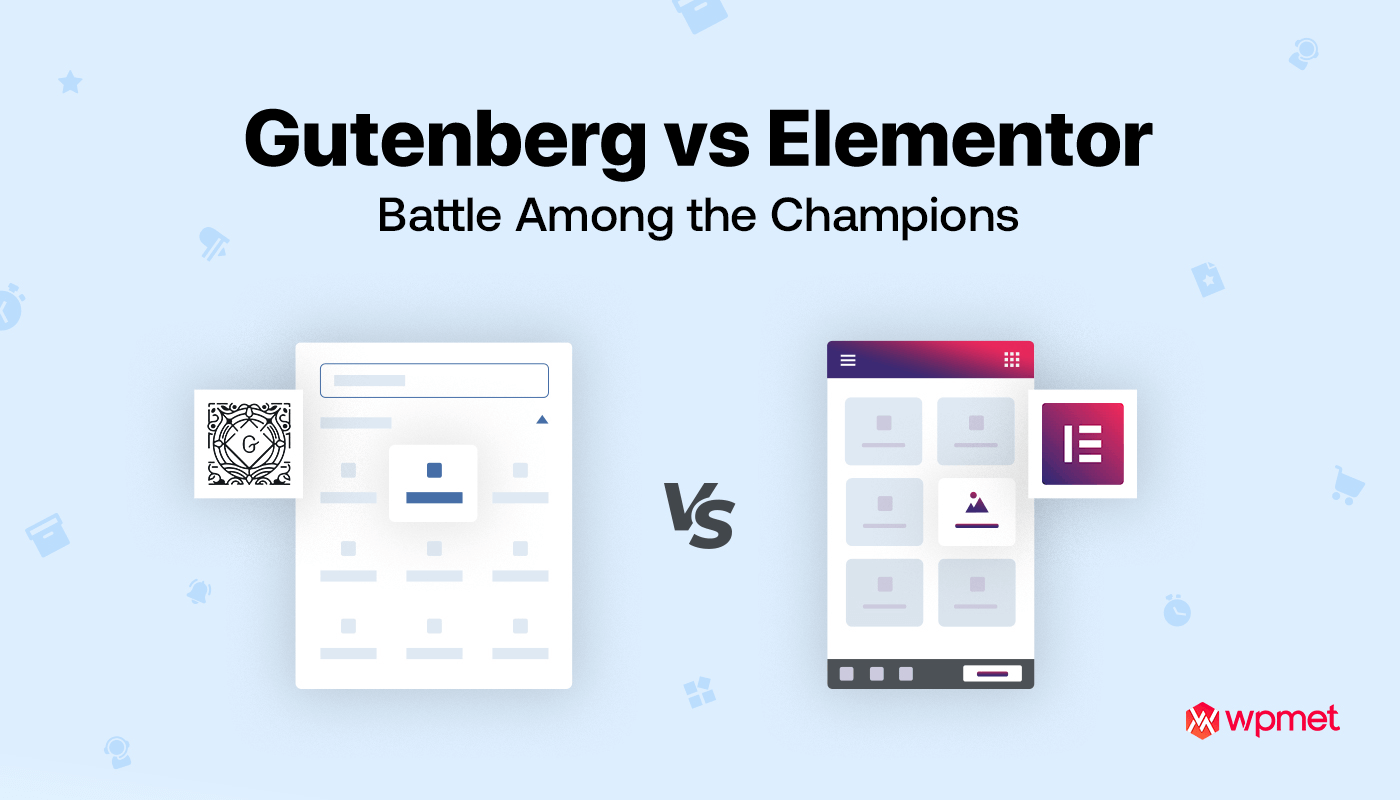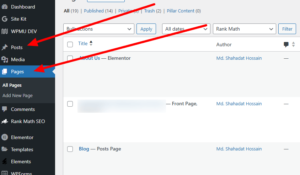Gutenberg is WordPress’s default block editor, while Elementor is a popular drag-and-drop page builder plugin. Both offer unique design capabilities.
Gutenberg is integrated into WordPress, offering a streamlined and basic block-editing experience. This editor is ideal for those who prefer a simpler, native option without additional plugins. Elementor, on the other hand, provides a more advanced and flexible design environment with a vast array of widgets, templates, and customization options.
It empowers users to create complex layouts with ease and precision. Both tools cater to different user needs, with Gutenberg focusing on simplicity and Elementor offering extensive design freedom. Choosing between them depends on your website’s design requirements and your familiarity with WordPress.
User Interface
The user interface is a crucial part of any page builder. It determines how easily users can create and manage content. Both Gutenberg and Elementor have distinct interfaces, each designed to enhance user experience.
Ease Of Use
Gutenberg offers a simple, block-based interface. Users can add blocks for different types of content like text, images, and videos. This makes it easy for beginners. You can quickly learn how to use it.
Elementor provides a drag-and-drop interface. This makes it more intuitive. You can see changes in real-time. The learning curve is slightly steeper but more rewarding.
Customization Options
Gutenberg offers limited customization options. You can change basic styles like font size and color. Advanced customization needs coding knowledge.
Elementor excels in customization. You can tweak almost every element. It provides a wide range of widgets and templates. This makes it a preferred choice for advanced users.
| Feature | Gutenberg | Elementor |
|---|---|---|
| Ease of Use | Beginner-friendly | Intuitive, Real-time preview |
| Customization | Basic styles | Advanced options |
- Gutenberg is ideal for simple layouts.
- Elementor suits complex designs.

Credit: www.namehero.com
Features And Functionalities
Understanding the features and functionalities of Gutenberg and Elementor is essential. These two popular WordPress page builders offer unique capabilities. This section will dive into their core features and advanced functionalities.
Core Features
Both Gutenberg and Elementor have distinct core features. These features define their usability and user experience.
| Feature | Gutenberg | Elementor |
|---|---|---|
| User Interface | Minimalistic and simple to use. | Intuitive and visually rich. |
| Block-Based Editing | Uses content blocks. | Offers a wide range of widgets. |
| Customization | Limited but growing. | Highly customizable with many options. |
Advanced Capabilities
Both page builders excel in advanced capabilities that enhance their functionality. Let’s explore what each offers:
- Theme Builder
- Gutenberg: Basic theme editing.
- Elementor: Full theme builder, including headers and footers.
- Responsive Design
- Gutenberg: Limited responsive options.
- Elementor: Advanced responsive controls.
- Third-Party Integrations
- Gutenberg: Integrates with default WordPress plugins.
- Elementor: Extensive support for third-party plugins and tools.
- Animation and Motion Effects
- Gutenberg: Basic animation options.
- Elementor: Advanced motion effects and animations.
Both Gutenberg and Elementor have their strengths. Choosing one depends on your specific needs.
Performance And Speed
Comparing Gutenberg and Elementor reveals key differences in performance and speed. Both page builders have unique strengths and weaknesses. Understanding these can help you choose the best tool for your needs.
Loading Times
Gutenberg is the default WordPress editor. It is designed to integrate seamlessly with WordPress core. This integration leads to faster loading times. Since it is lightweight, it puts minimal strain on your server.
Elementor is a powerful drag-and-drop page builder. It provides extensive customization options. These features come with a trade-off. The added functionalities can increase loading times. Elementor requires more resources, impacting speed.
Resource Usage
Gutenberg uses fewer resources compared to Elementor. It relies on the existing WordPress framework. This reduces the need for additional scripts and stylesheets.
Elementor, on the other hand, loads extra files to support its features. These include JavaScript and CSS files. While these enhance design capabilities, they can also slow down your site.
| Feature | Gutenberg | Elementor |
|---|---|---|
| Loading Times | Fast | Slower |
| Resource Usage | Minimal | High |
In summary, Gutenberg excels in performance and speed. It offers quicker loading times and lower resource usage. Elementor provides advanced customization options. This comes at the cost of increased loading times and resource usage.

Credit: wpmet.com
Design Flexibility
Design flexibility is crucial for any website builder. Gutenberg and Elementor offer unique features. These features help users create stunning websites. Let’s explore their differences.
Template Options
Gutenberg provides a range of block templates. These blocks are easy to customize. Users can mix and match blocks. This creates unique layouts.
Elementor offers extensive template libraries. You can choose from pre-made sections. These sections cover headers, footers, and more. Users can also save custom templates.
| Gutenberg | Elementor |
|---|---|
| Block Templates | Extensive Template Libraries |
| Mix and Match Blocks | Pre-made Sections |
| Basic Customization | Save Custom Templates |
Styling And Layout
Gutenberg offers basic styling options. Users can change colors, fonts, and sizes. It’s suitable for simple designs. Advanced styling requires custom CSS.
Elementor excels in styling and layout. It provides a drag-and-drop interface. Users can adjust margins, padding, and more. Advanced styling is possible without coding.
- Gutenberg: Basic Styling
- Elementor: Advanced Styling
- Gutenberg: Custom CSS Needed
- Elementor: No Coding Required
Seo And Mobile Responsiveness
Understanding the differences between Gutenberg and Elementor can help. They are both popular page builders. Let’s dive into their features concerning SEO and mobile responsiveness.
Seo Tools
Both Gutenberg and Elementor offer essential SEO tools. Yet, they approach it differently.
- Gutenberg: Integrates seamlessly with SEO plugins like Yoast. Offers basic SEO features.
- Elementor: Provides built-in SEO capabilities. Advanced users will find it more flexible.
| Feature | Gutenberg | Elementor |
|---|---|---|
| Plugin Integration | Seamless | Flexible |
| Built-in SEO | Basic | Advanced |
Mobile Optimization
Mobile optimization is crucial. Both page builders excel in different ways.
- Gutenberg: Uses responsive blocks. Ensures content adapts to all screens.
- Elementor: Advanced controls for mobile design. Allows for tweaking on mobile views.
Gutenberg blocks adapt automatically to screen size. Elementor offers more control for mobile-specific adjustments.
Pricing And Value
Understanding the pricing and value of Gutenberg and Elementor can help you choose the best plugin for your needs. Both have their strengths and weaknesses, so let’s dive into the details.
Cost Comparison
Both Gutenberg and Elementor offer different pricing models. Gutenberg is free as it is built into WordPress. Elementor offers a free version but has additional premium plans.
| Plugin | Free Version | Premium Plans |
|---|---|---|
| Gutenberg | Yes | None |
| Elementor | Yes | Starting at $49/year |
Value For Money
Gutenberg is integrated into WordPress, offering a lot of value at no extra cost. It is a great tool for basic website needs.
Elementor, on the other hand, provides more advanced features. The premium plans unlock additional templates, widgets, and support.
- Elementor’s free version is powerful, but the premium plans add significant value.
- Gutenberg is ideal for users who need basic customization.
In terms of value for money, Elementor offers more advanced options at a cost. Gutenberg is a solid choice for those who prefer not to spend extra.
User Support And Community
Understanding the user support and community behind Gutenberg and Elementor is crucial. Both have dedicated resources to help users. This includes documentation, forums, and active communities. Let’s dive into the specifics of each.
Documentation
Gutenberg and Elementor provide extensive documentation. This helps users understand their features and functionalities. The documentation includes:
- Step-by-step guides
- Video tutorials
- FAQs
The Gutenberg documentation is available on the official WordPress website. It covers everything from installation to advanced features. Elementor’s documentation is equally comprehensive. It is available on their official website, offering detailed guides for beginners and experts.
Community Support
Both Gutenberg and Elementor have vibrant user communities. These communities provide:
- Forums for discussions
- Social media groups
- Meetups and events
Gutenberg’s community is integrated within the WordPress ecosystem. You can find help on the WordPress.org forums. Elementor’s community is also very active. They have dedicated Facebook groups and forums where users share tips and solutions.
Here’s a comparison table for quick reference:
| Feature | Gutenberg | Elementor |
|---|---|---|
| Documentation | Available on WordPress.org | Available on Elementor.com |
| Forums | WordPress.org forums | Elementor forums |
| Social Media Groups | Less active | Highly active on Facebook |
| Meetups and Events | WordPress events | Elementor meetups |

Credit: kinsta.com
Frequently Asked Questions
What Is Gutenberg?
Gutenberg is WordPress’s built-in block editor. It allows users to create content using blocks. It’s integrated directly into WordPress.
What Is Elementor?
Elementor is a popular WordPress page builder plugin. It offers a drag-and-drop interface. It provides advanced design capabilities.
Which Is Easier To Use, Gutenberg Or Elementor?
Elementor is generally easier for beginners. It has a more intuitive drag-and-drop interface. Gutenberg requires familiarity with blocks.
Can Gutenberg And Elementor Be Used Together?
Yes, Gutenberg and Elementor can be used together. They both work within WordPress. Some users prefer combining their strengths.
Conclusion
Choosing between Gutenberg and Elementor depends on your needs. Gutenberg offers simplicity and speed. Elementor provides advanced design options and flexibility. Both have unique strengths. Evaluate your project’s requirements. This helps in making the best decision. Whether you prefer simplicity or advanced design, both tools can enhance your WordPress experience.






